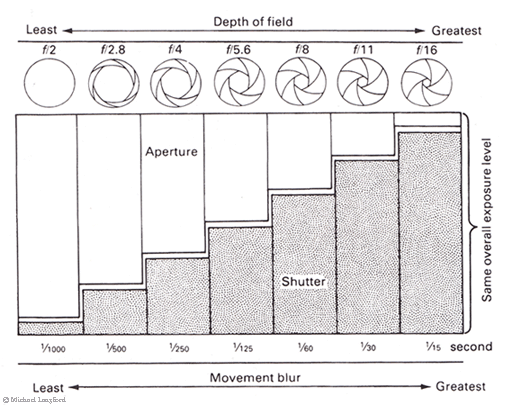Students, your new assignment is a challenge for you to demonstrate an understanding of ISO and how to adjust both Aperture and Shutter Speed to maintain proper Exposure across multiple ISO settings. In this assignment you will find a still life subject, and shoot 4 images that have similar exposures but increase in ISO. Little change should be seen in light/dark values, only additional grain/noise should be noticed as increasing. Overlay your images as shown below and document your exposure settings.
 |
| Notice the increase in shutter speed and decrease in aperture size that was required to maintain exposure levels across the 4 iso ranges |
Reading and resources for deeper understanding:
Lightstalking: The Rule of Equivalent Exposure
Exposure Calculator
Lightstalking: The Rule of Equivalent Exposure
Exposure Calculator
Assignment Deliverables:
Part A:
- Produce a series of images (4) that demonstrate the impact that ISO has on the noise in an image while maintaining consistent exposure. Choose a creative still life subject and produce 4 images showing the range of ISO settings from low to high. Mimic the ISO Comparison images above. You will need to adjust either shutter speed or aperture to keep even exposure, don't let the different examples get darker or lighter.
- Compile the images in slices to show the even exposure levels, as illustrated above
Part B:
- Written Synopsis of the Exposure Principals. Write a short 3 paragraph description of the three principals of exposure, shutter speed, aperture and iso, what they mean and how you utilize them in photography.
- Email your essay to the instructor for credit
- Due following thursday
- Mr.W






